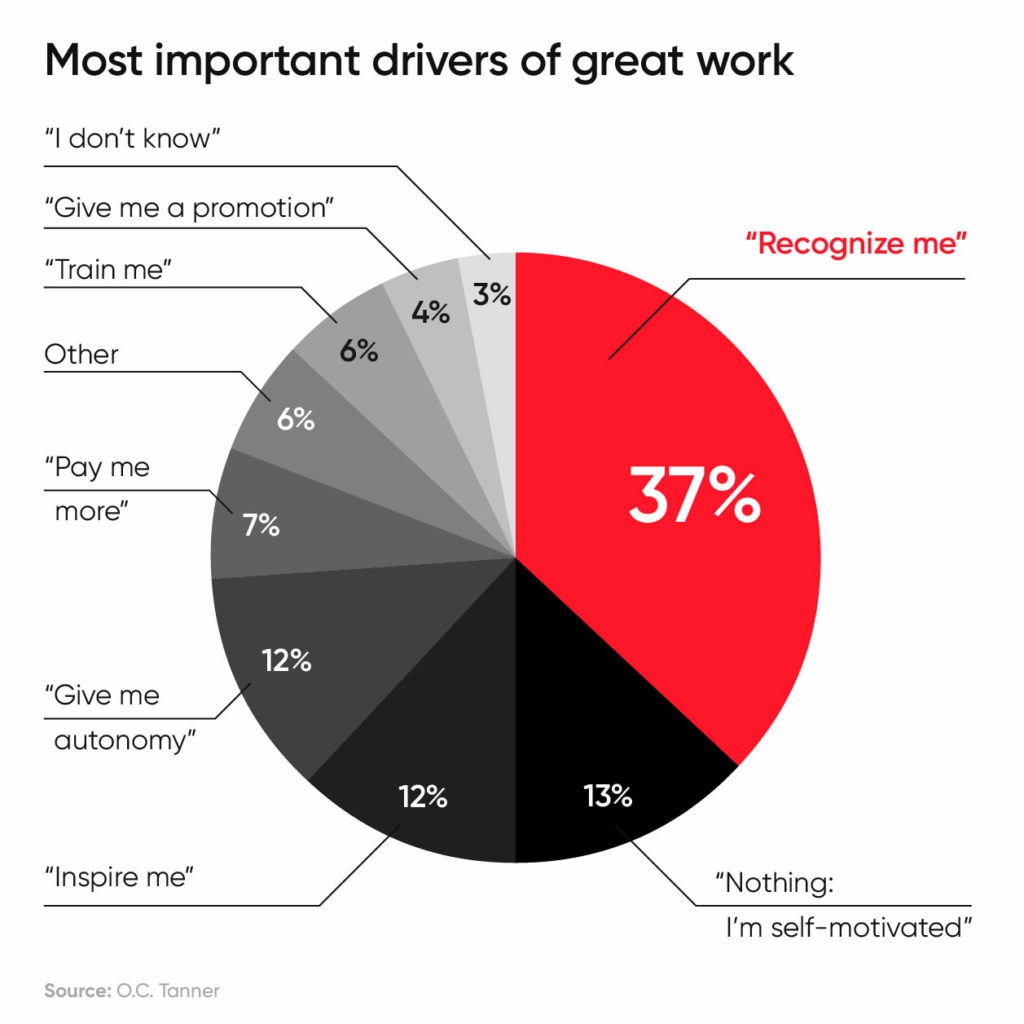If you are looking for tips on how to prevent burnout in the workplace, you have come to the right place.
Burnout happens to the best of us. Everyone loves high-performing employees, but we often forget that they’re the same people who are hit by burnout like a truck on a slick winter night.
On top of that, burnout’s symptoms can lead to chronic health problems for employees and scarily high turnover numbers for organizations.
Everhour is the top choice for small businesses and small to mid-size teams of 5 to 50 members, including professionals like software developers, marketers, designers, consultants, lawyers, you name it!
Seamlessly integrating with popular project management tools like Asana, Trello, and Jira, its user-friendly interface and customizable reports make it the ultimate time tracking solution for small and mid-size teams.
With dedicated support ensuring you receive timely assistance, our team is here to help you promptly and with a smile!
Luckily, we know more about the causes and how to prevent burnout today than ever before. We know that it comes in stages, has a host of symptoms—exhaustion, lack of motivation, physical manifestations—and that it can affect team morale.
We’ve also moved beyond looking at burnout as solely an individual problem (hurrah for that!). Managers, team leads, and organizations all have a role to play in assessing how to prevent burnout and making the right changes.
If you’re wondering how to start, this article is for you!
Why Burnout Is a Real Problem?
In general, many employees in industries worldwide have reported feeling less than fully charged at work. A lot of this has to do with hitting the pandemic wall. But stress, burnout, overwork, and exhaustion have always been around, wreaking havoc.
Burnout has serious consequences at all levels of society. In organizations, burnout sabotages workforce retention and has financial repercussions. In general, burnout drives up health costs to billions of dollars annually. The ripple effects are far-reaching.
When asked why is it important for organizations to care about employee mental health, business psychologist and psychotherapist Douglas Labier, Ph.D., said:
“That’s like growing a vegetable garden and then asking why it’s important to provide water and adequate sunlight.”
The bottom line is this: without healthy and motivated employees, most businesses wouldn’t survive.
How to Prevent Burnout in the Workplace

Everyone deals with a burnout in different ways — so, naturally, prevention must also be personal. To do that, managers need to discuss what factors are likely to cause burnout in their particular organization. That said, some strategies could be universal for all teams and environments:
1. Make well-being a priority of organizational culture
Organizational culture is the norms that unite the workplace and set the tone for how people treat each other. Long working hours and a lack of work-life balance are usually consequences of a culture that doesn’t value humans, only robots. However, when policies on how to prevent employee burnout are part of organizational culture, it becomes an imperative, not just a nice-to-have that HR is peddling.
Oh, and, did you know that well-being isn’t a homogeneous thing? Gallup found that there are five elements of well-being that can make the difference between surviving and thriving. The elements are:
- Career: feeling motivated to achieve one’s goals
- Physical: good health and enough energy to work
- Social: supportive relationships in and outside of work
- Community: feeling safe and comfortable in your community (often where you’re living)
- Financial: steady economic life that has security
It’s also essential to prioritize prevention over cure. It’s difficult for someone under tremendous stress to learn coping techniques. However, if anti-burnout and early recovery strategies were made part of employees’ routine, then they’re more likely to have the right resources to cope with burnout if they experience it.
2. Maintain healthy and trusting conversations with employees
As a manager or an employer, the ball is in your court to ensure every voice is heard and everyone feels involved. Meetings and regular check-ins are a great way to make this happen, particularly while collaborating remotely. 1:1s are especially useful because you may hear of many issues that employees are too hesitant to bring up during team meetings. These conversations might alert you to red flags that need resolving.
At a team level, it’s always a good idea to encourage open conversations about burnout. Swapping stories invokes a feeling of solidarity, strengthening teams and sparking positive organizational culture changes. Supplement these meetings with words of appreciation to make employees feel seen and heard.
3. Encourage employees to check in with themselves regularly
Burnout can be very personal, and employees know themselves best. To stave off burnout in the long term, consider encouraging employees to check in with themselves regularly. Ask them to go over their performance in their last few weeks, their feelings and emotions, and their energy levels at the moment. Establishing these check-ins as a regular practice will help employees prioritize their well-being in tandem with their work. It’ll also lead to higher introspection, better self-awareness, and sustained productivity levels.
To start, managers or employers can ask employees to take a burnout test or attend reflections sessions. A set of questions to answer and guidelines on what to do next can set the tone for these reflections, and make them a healthy habit among employees.
4. Make work purposeful
A prevalent cause of burnout is the incongruence between someone’s personal values and that of the company. Gone are the days when a fat paycheck was all one wanted out of a job. Today, if an employee feels like their work has no purpose — or that they’re not making significant contributions — then they’re more likely to veer into the fast lane to burnout.
However, managers and employers are ideally placed to connect everyone’s role to the company’s larger mission. Reinforcing just how much someone’s work contributes to the organization and the world can help prevent burnout in those who thrive on mission-oriented work. Of course, this would mean sitting down with each employee, poring over their task list, and drawing parallels—but it’s worth the hard work when motivation and employee retention soars.
5. Make vacation time mandatory, not just a nice-to-have

Time off is a healthy choice, no matter what the “go hard or go home” hustlers say. Many workplaces stigmatize vacation time, inducing guilt in any employee who wants to take a well-deserved break. However, encouraging the use of vacation time is a trick in the “how to prevent burnout” playbook that never goes awry. Why’s that?
Taking time off puts distance between employees and stressors, helping them catch their breath, reprioritize and recover from burnout. This seems easier said than done in a time when we’re all hyper-connected. But this is where managers and employers can flex their empathy muscles by encouraging employees to disconnect from work during vacation time completely. That means no quick Slack check-ins and no meetings by the poolside.
It’s equally important to lead by example — when managers and CXOs take time off regularly, they give off a signal that everyone else is encouraged to do so, too.
6. Support employees in exiting the burnout trap
When managers and employers recognize imminent signs of burnout in an employee, it isn’t enough to ask them to take a break. Often, employees might hesitate to take time off because they have a lot riding on their shoulders or are critical team members. They might also be experiencing decision fatigue, feeling too worn out to create time for a break.
In such scenarios, it’s the manager’s or employer’s responsibility to help employees arrange things in a way that allows them to take a break. By asking permission and helping to remove any barriers, managers can give the burnt-out employee a break and ensure the pressure doesn’t shift onto their team’s shoulders.
7. Prioritize recognition in the workplace
Studies show that a lack of recognition and support from leadership can fuel burnout in the workplace. Therefore, when discussing how to prevent burnout, there must be some conversation around building a high-recognition culture.

This doesn’t only mean instituting a rewards and recognition program, although those are great at enshrining intention into policy. Simply saying “thank you” to a helpful colleague can make them feel seen and needed. The point is that recognition of good work and effort needs to be an everyday thing at the workplace and doesn’t need to depend on goals or milestones. Sending a message of recognition on a shared Slack channel, or recording them in a common document, ensures that the appreciation is seen company-wide and isn’t just a closed-door setup.
High-recognition cultures lead to less employee turnover and better performance. This is probably because the environment feels encouraging instead of stifling, and a sense of purpose prevails.
8. Adopt appropriate technology to help prevent burnout
Keeping track of burnout symptoms manually can be a challenging task for managers who already have a lot on their plate—but that’s not to say these efforts must be deprioritized. Instead, they can be allotted to technology and automated systems so that key insights still drive employee-friendly policies.
Pulse checks are a great example of these systems. They allow employers to have their fingers on the metaphorical pulse of their employees and spot red flags well before they escalate. Time off management systems can help identify those who haven’t taken a break in a while and notify them to stave off burnout. Workplace systems like these play a crucial role in making work environments psychologically safe.
How to Prevent Burnout: Conclusion
Managers often have their plates full with people management and administrative tasks, so employers must ask themselves this question: how can we support them in balancing their responsibility to the organization and their team? Above all else, it’s crucial to equip managers with support and resources to prevent burnout in their teams.
We spoke about leading by example, which applies to managers too, as they also experience burnout. Managers are at an even higher risk of burnout, so it’s worth thinking about supporting their well-being while doing the same for individual employees.
The more we talk about burnout in the workplace, the more we understand its nuances and build better organizations!

